Don’t Let String Theory Ruin The Perfectly Good Science Of Physical Cosmology
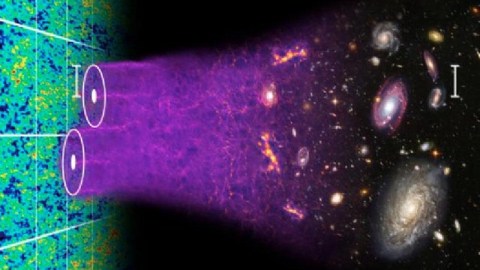
When you mix science with speculation, you get speculation. But the underlying science is still real.
Whenever you hear the phrase, “it’s just a theory,” it should trigger alarm bells in the scientific portion of your brain. While most of us, colloquially, use the term theory synonymously with a word like idea, hypothesis, or guess, you have a much higher bar to clear when it comes to science. At the very least, your theory needs to be formulated within a self-consistent framework that doesn’t violate its own rules. Next, your theory needs to not (obviously) conflict with what’s already been observed and established: it must be a non-falsified theory.
And then, even at that, your theory can only be considered speculative until the critical and decisive tests arrive, allowing you to discern whether your theory matches the data in a way that alternatives — including the prior consensus theory — do not. Only if your theory passes a series of tests will it be accepted by the mainstream. Quite famously, string theory does not meet the necessary criteria for this, and can be considered, at best, a speculative theory. But many astrophysical theories, including inflation, dark matter, and dark energy, are far more sound than almost everyone realizes. Here’s the science behind why we’re so certain that all of them exist.
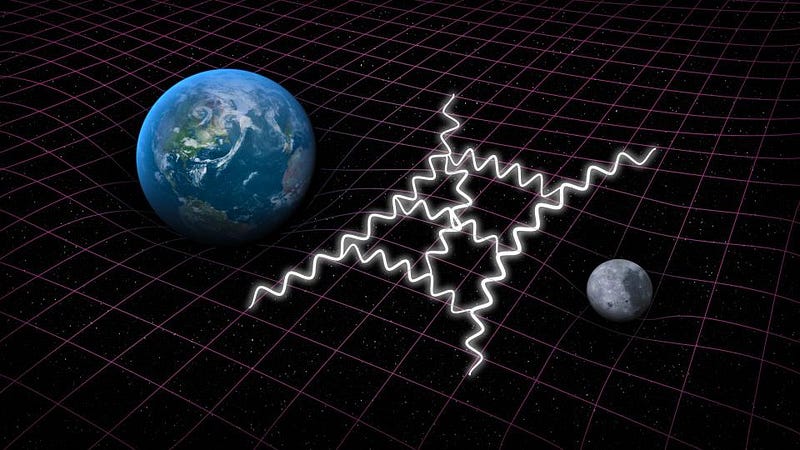
The history of science is filled with ideas, some of which have been shown to accurately describe reality over some particular range which we can probe it, and others of which turned out not to describe reality, although they could have if nature had answered our questions differently. We have a Universe that obeys Newton’s laws of motion and his theory of universal gravitation, so long as speeds are low compared to the speed of light. At higher speeds, Newton’s laws of motion no longer apply, and must be superseded by Special Relativity. In strong gravitational fields, even Special Relativity and universal gravitation aren’t enough, and General Relativity is required.
Although General Relativity holds up as our theory of gravity everywhere we’ve probed it, we fully expect that when we dive deep into the quantum Universe — to small enough distance scales or at high-enough energy scales — even General Relativity is known to give nonsense answers: answers that indicate an end to its range of validity. Despite all of its predictive power, and its status as arguably the most successful physical theory of all time, it’s powerless to describe the region around a black hole’s singularity, physics near the Planck scale, or the emergence of space and time themselves. For those phenomena, a quantum description of gravity will be necessary.
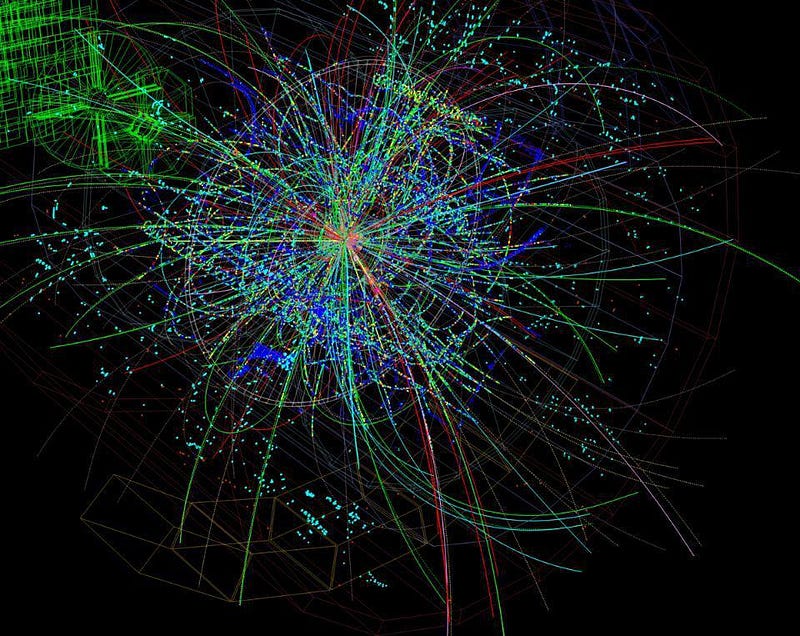
Of course, we’ve never gotten anywhere near that far in practice. Directly, we can produce collisions in particle colliders up to a little more than 10⁴ GeV: enough to unify the electromagnetic and weak forces and to create all the particles (and antiparticles) of the Standard Model, but still a factor of a quadrillion (10¹⁵) beneath the Planck scale. Whatever the physics of:
- the early Universe,
- the high-energy Universe,
- or at distance scales below about ~10^–19 meters,
we don’t have any direct evidence supporting it.
But that hasn’t stopped us from, well, theorizing. We can concoct scenarios where new physics — physics that, if we added it in, wouldn’t conflict with the low-energy, late-time Universe that’s already been observed — comes into play. Many of these scenarios are quite famous within the physics community, and include such novelties as extra dimensions, supersymmetry, grand unification theories, compositeness to certain particles presently thought to be fundamental, and string theory.
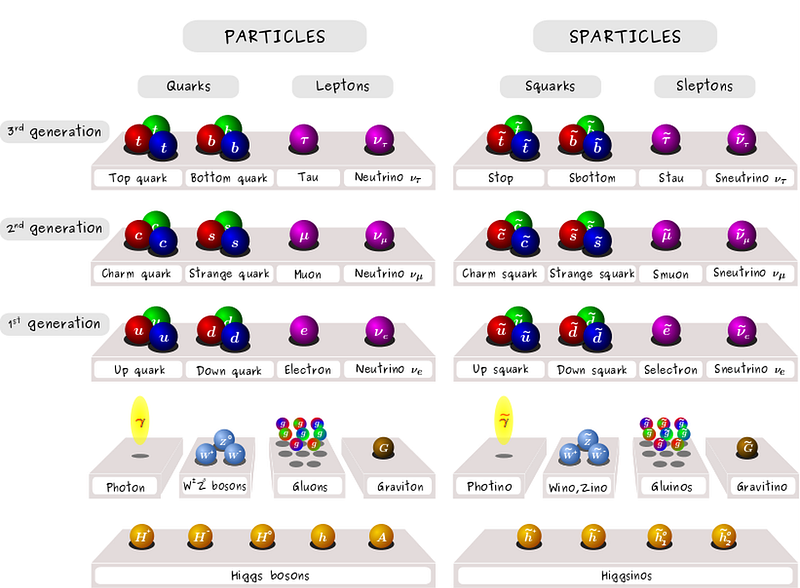
However, there exists no direct experimental evidence to support any of these scenarios. You can’t exactly rule them out by not finding evidence for them; you can only place constraints on them, saying that if they exist, they exist below a certain experimental threshold. In other words, their couplings to the observed particles must be below a certain value; their cross sections must be below a certain value with normal matter; the masses of new particles must be above a certain threshold; their effects on the decays of the known particles must be below the measured limits.
Many scientists who work in these fields — on the frontiers of high-energy and particle physics — have begun to openly express frustrations about the lack of promising new directions to explore. At the Large Hadron Collider, there’s no indication of any particles beyond the Standard Model, or even of any non-standard decay channels for the Higgs boson. Proton decay experiments have extended the lifetime of the proton to ~10³⁴ years, ruling out many grand unified theories. Experiments probing for extra dimensions have come up empty.
On every front, the search for new fundamental particle physics that takes us beyond the Standard Model has thus far come up empty. Even the Muon g-2 experiment, vaunted for its precision in measuring a particular fundamental constant of the Universe, is arguably more likely to point to a problem in how we calculate quantities using different methods than it is to point to new physics.
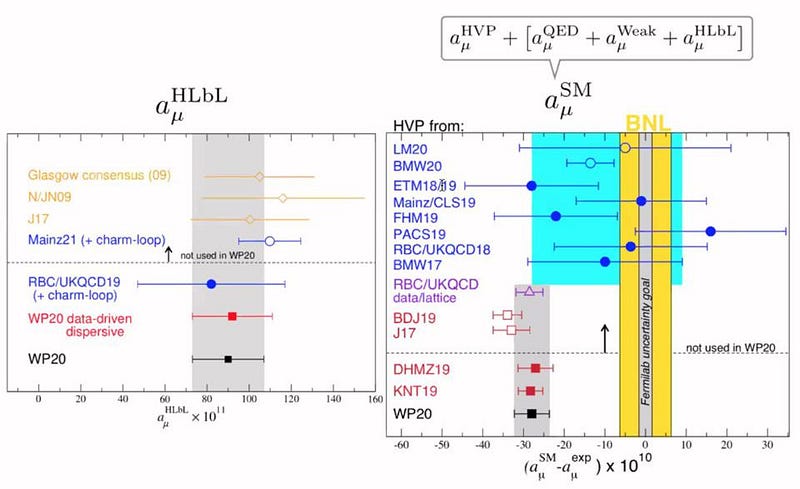
Although a few alternative ideas have emerged in theoretical high-energy physics and in quantum gravity circles in recent years, it’s proven very difficult to introduce new physical ideas or concepts that aren’t already ruled out by the vast suite of data we already possess. The combined measurements of subtle effects like quark mixing, neutrino oscillations, decay rates, and branching ratios severely limit what sorts of new physics can be introduced. And yet, as long as you’re willing to push whatever new physics you want to invoke to higher energies and smaller cross-sections or couplings, you can keep ideas like supersymmetry, extra dimensions, grand unification, and string theory alive.
It poses a conundrum for theoretical physicists who work on these problems, though: what should they work on? It’s one thing to engage in fanciful ideation and to calculate the consequences of whatever scenario you’ve envisioned; it’s quite another to continue to plow ahead, undaunted, into further exploring a scenario with no evidence behind it. You can, of course, but you must worry that you’re deluding yourself in doing so, just like perhaps the previous ~40 years of high-energy theorists have done. You can always attempt to explore alternative scenarios as well, although that has arguably not been fruitful, either.
But there’s a third option. You can take your ideas and try to bring them into a place where there is lots of compelling evidence for physics beyond what’s well-established: the field of cosmology.
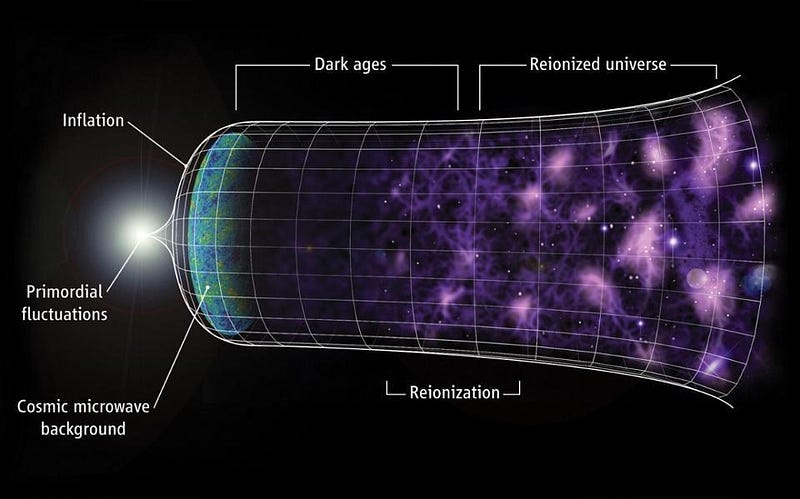
A lot of high-energy theorists and string theorists have begun working on cosmological problems in recent years, and in some ways that’s a good thing. Particle physics plays a tremendously important role in astrophysical systems across the Universe, and in particular in high-energy environments, including:
- in the early Universe during the first fractions-of-a-second of the hot Big Bang,
- around dense, collapsed objects such as black holes and neutron stars,
- and in hot environments such as astrophysical plasmas.
Processes such as matter-antimatter annihilation, pair creation, neutrino emission and capture, nuclear reactions, and the decay of unstable particles all occur in copious amounts in these extreme environments. The fusion of cosmology with high-energy physics has led to the emergence of a new field at their intersection: astroparticle physics.
What’s most exciting, however, is that some of the astrophysical observations we’ve made indicate there’s more to the Universe than the Standard Model alone can account for. In many ways, it’s our measurements of the cosmos itself — the Universe on the largest scales — that offers us the most compelling clues to what might be out there in the Universe beyond the limits of currently known and well-understood physics.
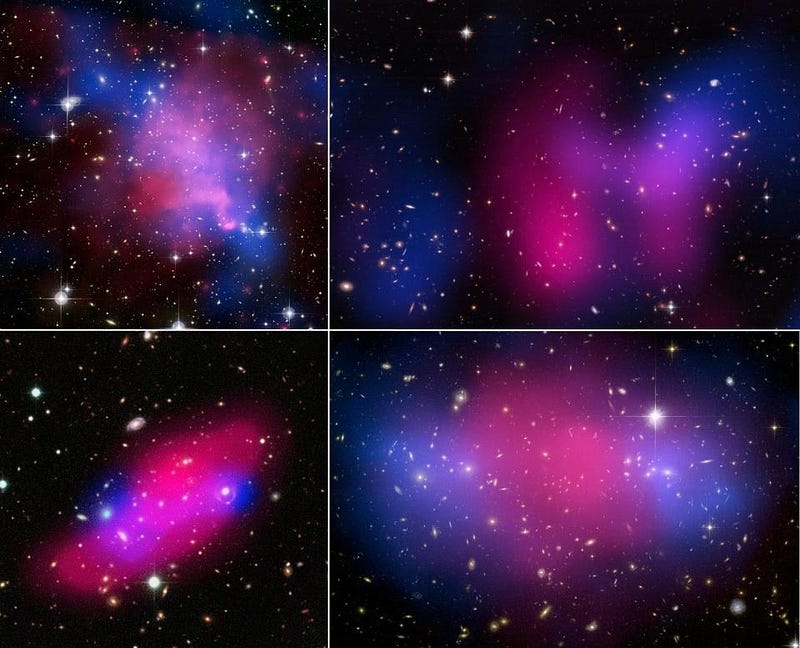
In particular, there are four arenas where simply starting off from an extremely hot, dense, uniform, matter-and-radiation-filled, expanding Universe, and evolving the clock forward in time, simply won’t reproduce the cosmos that we see today. If we did that with the laws we know of — General Relativity plus the Standard Model of particle physics — we would get something that looked very different from our Universe.
- We would not have a Universe filled with matter, but one where particles and antiparticles existed in equal abundance to one another, and with a density approximately a trillion times smaller than what we have today.
- We would not have a Universe where a complex web of structure formed, but one where only small-scale structures would form, blasting themselves quickly apart once the first wave of star-formation occurred.
- We would not have a Universe where distant objects sped up in their recession from us at late times, but rather one where distant objects receded ever more slowly from us.
- And we would not have a Universe that was born with the specific spectrum of initial fluctuations that we see, including on scales larger than the cosmic horizon, 100% of which are adiabatic (isentropic) in nature, with a non-trivial cutoff to the maximum temperature that could have been reached during the hot Big Bang.
These four sets of observations are vital to our Universe’s history, pointing towards baryogenesis and the creation of a matter-antimatter asymmetry, dark matter, dark energy, and cosmic inflation, respectively.
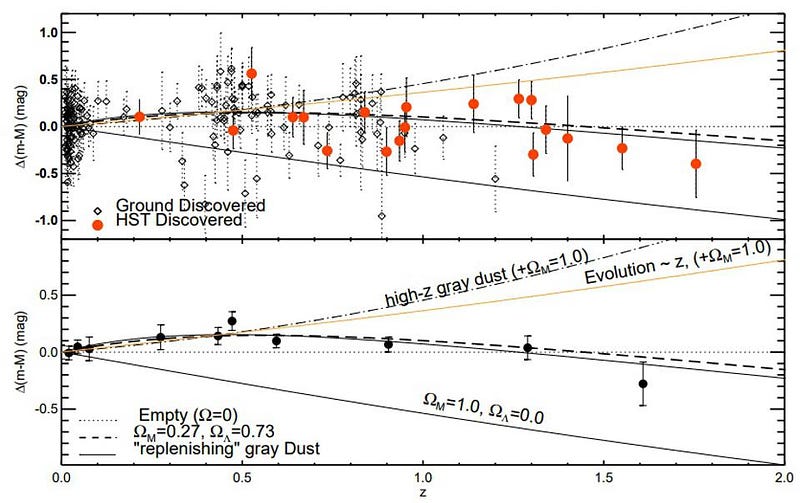
There isn’t just one line of evidence for any of these phenomena, but it’s very clear that if you want to reproduce the Universe we have, as we observe it to be, these ingredients and components are required. The combination of multiple sets of observations, including:
- the distant objects we observe, whose underlying physics and observable properties are well-known, at a variety of redshifts,
- the clustering of galaxies across cosmic scales,
- the fluctuations observed in the temperature and polarization of the cosmic microwave background radiation,
- the combined X-ray emissions and gravitational effects of galaxy groups and clusters that are in the process or aftermath of colliding,
- the individual motions of galaxies within galaxy clusters,
- the strength and number of the absorption features due to molecular clouds from ultra-distant quasars and galaxies,
all indicate that these four things exist or occurred: baryogenesis and inflation occurred, and dark matter and dark energy exist. The only alternatives we have are to finely-tune the initial conditions that the Universe was born with and to add in some sort of new particles or fields that mimic dark matter and dark energy in every way measured so far, but differ in some subtle way that has yet to be identified.
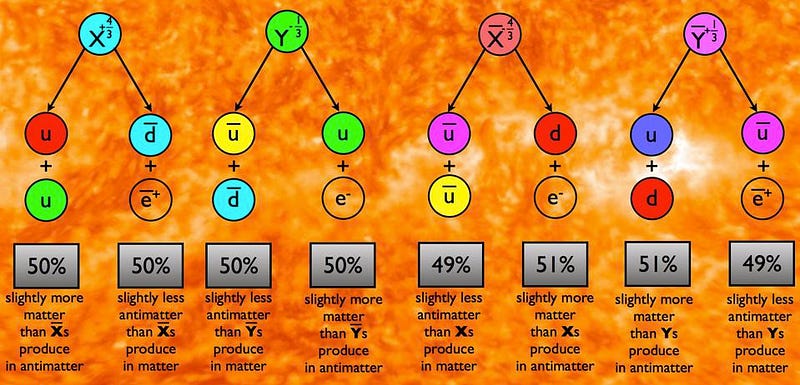
It is true that many of the details of these scenarios — particularly when you combine all four pieces of the cosmic puzzle together — lead to consequences that may or may not be observable.
- The fact that baryogenesis occurred is no guarantee that it occurred in a regime where our particle colliders or sensitive decay or recoil experiments will be able to reach.
- The fact that cosmic inflation occurred is no guarantee that it imprinted enough information onto the Universe for us to successfully determine all of inflation’s properties. The fact that it predicts the existence of a multiverse is no guarantee that such a multiverse is detectable or measurable.
- The fact that dark matter exists is no guarantee that we’ll be able to create and measure it in a laboratory experiment, or that it has properties that give it a non-zero cross-section with normal, Standard Model-based matter.
- And the fact that dark energy exists is no guarantee that we’ll be able to determine what its nature is or why it exists.
Using speculative theoretical ideas from high-energy physics to motivate the exploration of various scenarios may be popular, but it is neither the only approach nor is there any reason to believe it’s a compelling approach. When you add speculation to solid science, you get speculation. It doesn’t detract from the soundness of the sound science, however. Baryogenesis, inflation, dark matter, and dark energy are as real as ever, and don’t depend in the least on any of the speculative ideas from high-energy physics, like supersymmetry or string theory, being true or correct in any way.
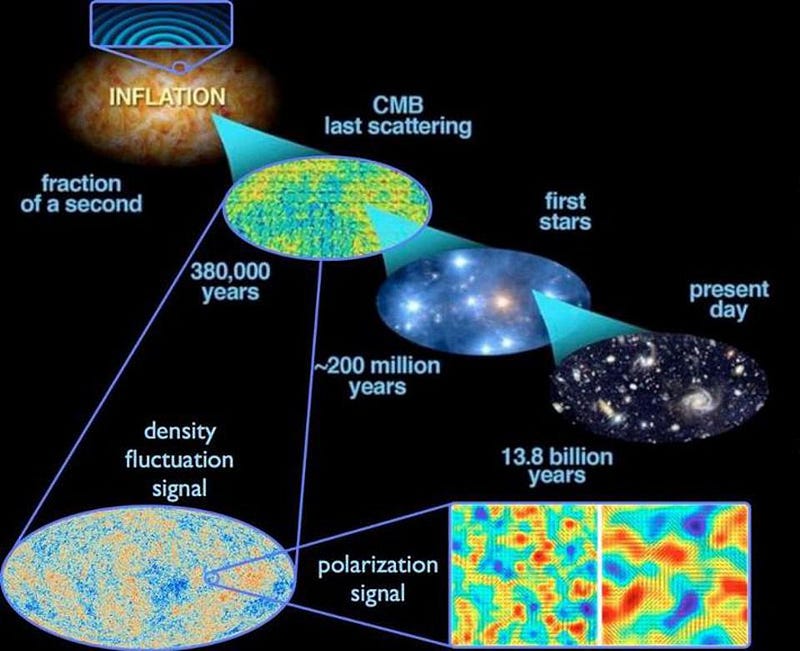
There are an unreasonable set of moving goalposts that some scientists — particularly contrarians to the mainstream — set up to add a false legitimacy to their claims, as well as a disingenuous uncertainty to the (well-justified) consensus positions. We do not need to identify the exact mechanism of baryogenesis to know that a matter-antimatter imbalance came about in our Universe. We do not need to directly detect whatever particle is responsible for dark matter, assuming dark matter even is a particle with a non-zero scattering cross-section, to know it exists. We do not need to detect gravitational waves from inflation to confirm inflation; the four discriminatory tests we’ve already performed are decisive.
And yet, there are still unknowns that we must be honest about. We do not know the cause of baryogenesis, or the nature of dark matter. We do not know whether inflation really must go on for an eternity, whether it really began from some non-inflationary predecessor state, and we cannot test whether the multiverse is real or not. We do not know, to put it bluntly, how far the range of validity for these theories extends.
But the fact that there are limits to what we know and to what we can know does not make our actual knowledge of the cosmos any less certain. Sympathy for contrarian positions and excitement about speculative ideas should only extend so far: to the extent that they’re supported by the full suite of available evidence. Especially when you’re attempting to push the frontiers of science forward, it’s important to not lose sight of what is actually, solidly known and established along the way. After all, as Richard Feynman put it, when it comes to science, “if you don’t make mistakes, you’re doing it wrong. If you don’t correct those mistakes, you’re doing it really wrong. If you can’t accept that you’re mistaken, you’re not doing it at all.”
Starts With A Bang is written by Ethan Siegel, Ph.D., author of Beyond The Galaxy, and Treknology: The Science of Star Trek from Tricorders to Warp Drive.





